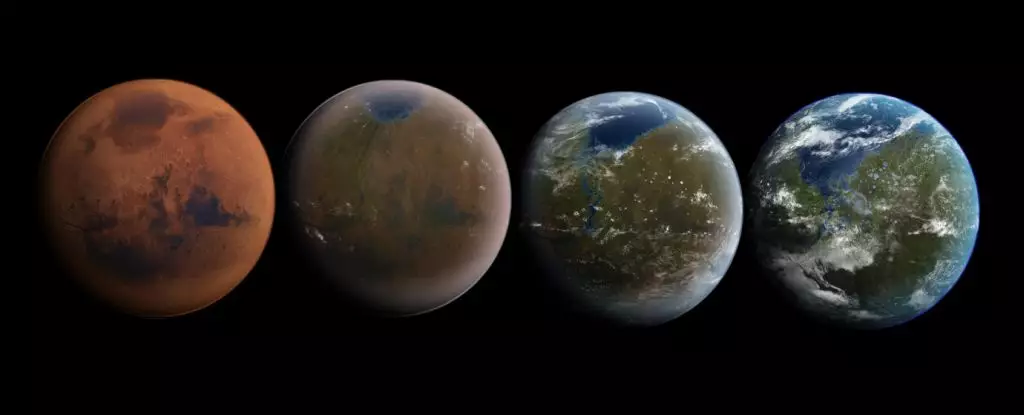Setting up long-term human colonies on Mars presents a multitude of challenges. One of the major obstacles is the planet’s inhospitable environment, with temperatures averaging -64 degrees Celsius (-85 Fahrenheit). In order to make Mars habitable for humans, significant changes need to be made. Scientists are continuously researching and developing innovative strategies to transform the Martian climate.
Scientists have recently introduced a groundbreaking method to warm up Mars using nanoscopic metal rods. This approach, led by electrical engineer Samaneh Ansari of Northwestern University, claims to be 5,000 times more efficient than previous methods. By releasing metallic particles into the Martian atmosphere, a greenhouse effect can be created and maintained. This process is essential for raising the temperature of Mars to a level where liquid water can exist, making it more conducive to life forms.
Unlike Earth, Mars lacks the necessary greenhouse gases to facilitate warming through traditional methods. Rather than importing materials from Earth, scientists propose utilizing the abundant metallic minerals present on Mars. By releasing tiny metallic rods into the atmosphere, these particles can reflect sunlight and trap heat, similar to greenhouse gases on Earth. This innovative approach capitalizes on the existing resources of Mars, making the process more feasible and cost-effective.
The introduction of nanorods into the Martian atmosphere could lead to significant warming over time. This increase in temperature could melt surface ice and raise atmospheric pressure, creating a more hospitable environment for microbial life. However, there are still challenges that need to be addressed. The longevity of the nanorods in Mars’ atmosphere remains uncertain, posing a potential risk of them attracting water particles and falling back to the surface as rain. Additionally, the timeline for terraforming Mars through this method is projected to span several decades, requiring further research and planning.
While the nanorod strategy offers a promising step towards terraforming Mars, it is important to acknowledge that significant hurdles still need to be overcome. The ultimate goal of establishing sustainable human colonies on Mars necessitates continuous exploration and innovation. As geophysicist Edwin Kite emphasizes, this research opens up new possibilities for achieving the long-standing dream of a thriving human presence on the Red Planet.
The prospect of warming Mars through the deployment of metallic nanorods represents a pivotal advancement in the field of space exploration. By leveraging the resources available on the planet itself, scientists are paving the way for a future where Mars could potentially sustain life. While challenges and uncertainties lie ahead, the pursuit of transforming Mars into a habitable environment demonstrates the resilience and ingenuity of the scientific community. Through collaborative efforts and continued research, the vision of establishing a sustainable human presence on Mars may become a reality in the foreseeable future.



Leave a Reply